Wheel Size:
- Size Small: 27.5”
- Sizes M–XL: 29’’ front / 27.5’’ or 29’’ rear
Travel: 160 mm rear / 170 mm front
Geometry Highlights:
- Sizes Offered: S, M, L, XL
- Headtube Angle: 63.5° (Neutral position)
- Reach: 480 mm (Size Large, Neutral position)
- Chainstay Length: 450 mm (Size Large)
Frame Materials: Aluminum and carbon fiber versions available
Price (see below for full details): Complete bikes starting at $3,999 USD / $4,799 CAD
Blister’s Measured Weight:
- Altitude carbon frame w/ Fox Float X2 shock, size Large: 8.41 lb / 3.81 kg
- Complete bike, as built: 34.26 lb / 15.54 kg
Test Locations: Washington, British Columbia
Reviewer: 6’, 170 lbs / 183 cm, 77.1 kg
Test Duration: 5 months
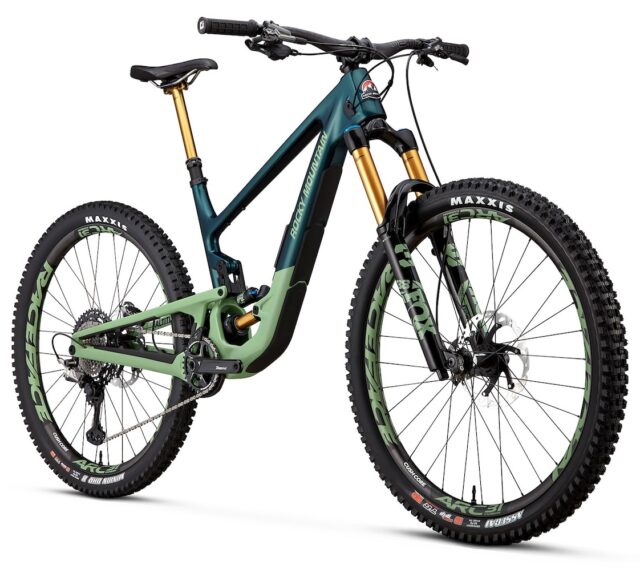
Intro
The Rocky Mountain Altitude was last updated in 2020, and that version still shared a main frame with its more Trail-focused sibling, the Instinct. With both bikes historically sharing a similar silhouette and update cycle, we assumed that the recently updated Instinct would be followed by an updated Altitude. While we were right about a new Altitude following on the heels of the new Instinct, we sure didn’t expect this degree of reimagining of the Altitude platform.
The revised Altitude features a new suspension design, a stated focus on increasing frame stiffness, and some fairly bold geometry numbers. I.e., it looks to be a major departure from the outgoing model. Read on to take a deeper look into the fully revised Altitude and understand where Rocky Mountain has found more capability and speed out of the new design.
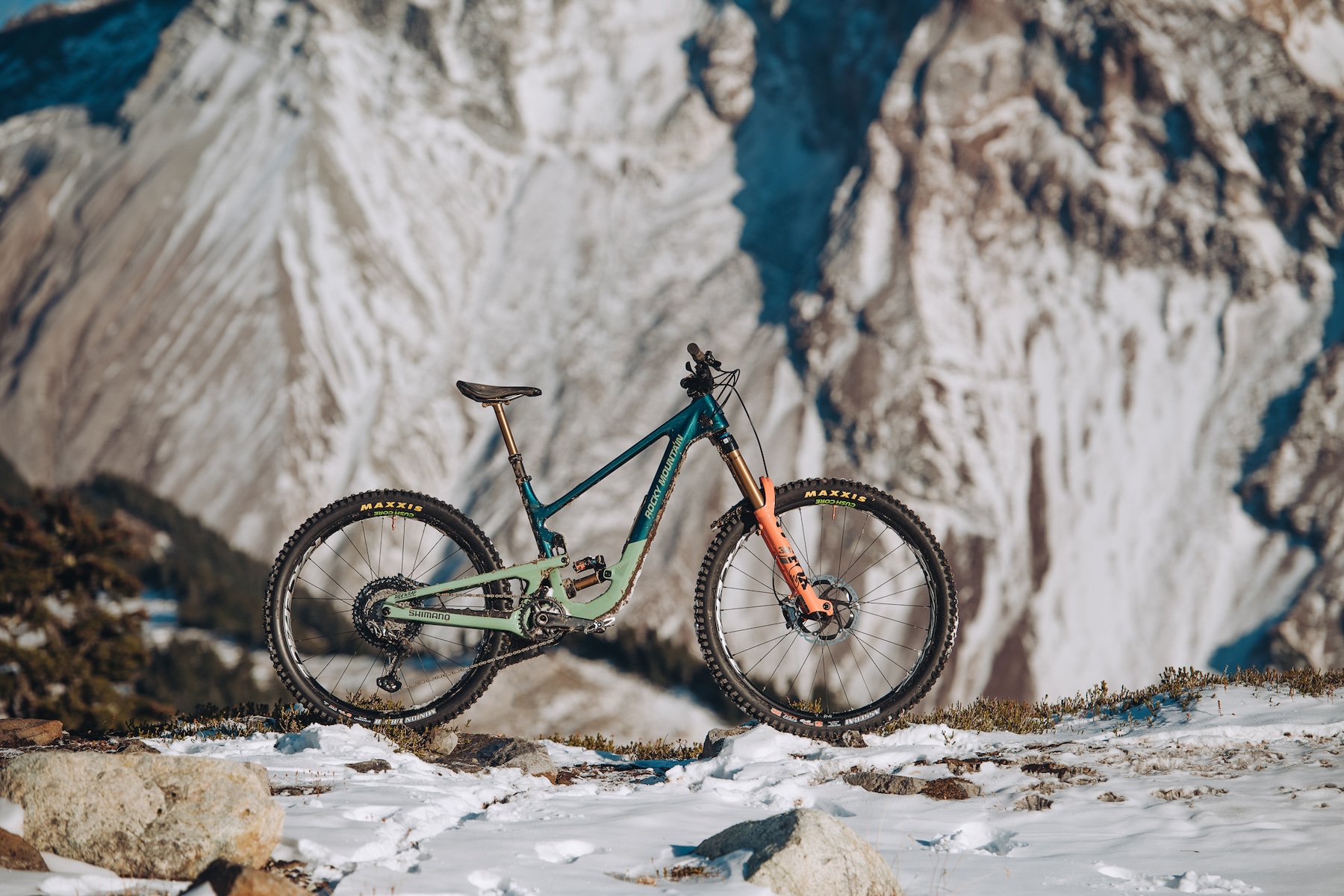
The Frame
To say that Rocky Mountain has a storied history in mountain biking would be quite the understatement; iconic bikes like the Pipeline, Slayer, and RMX have been ridden by Wade Simmons, Brett Tippie, Richie Schley, and other godfathers of the Freeride movement in the 1990s and early 2000s. Rocky Mountain’s bike designs have changed drastically over the years, with more recent bikes like the Element, Instinct, and Altitude all sharing similar frame silhouettes — and in the case of the outgoing Instinct and Altitude, sharing frames as well.
The 2024 Rocky Mountain Altitude no longer follows that familial aesthetic. Gone is the forward shock mount on the top tube, with the shock now being mounted quite low in the frame and controlled by a dual-link layout that Rocky Mountain calls LC2R. While the new frame will undoubtedly get some “looks like a ______” comments, Rocky Mountain actually debuted the LC2R name back in 2006 with the Slayer, also continuing its refinement in other iterations of the Flatline Downhill bike, which has since gone to pasture. Those were linkage-driven single pivots rather than the new Altitude’s dual mini-link arrangement, to be fair, but had some similarities in the positioning of the shock and so on.
LC2R stands for Low Centre Counter Rotating, describing the low-slung position of the shock and the motion of the dual links through the travel. Those two stubby links, one rotating around the bottom bracket, not only position weight exceptionally low in the frame for better handling, but also create a unified rear triangle for what Rocky Mountain says is greatly increased lateral stiffness compared to the outgoing model. Rocky Mountain also notes how the arrangement allows for a lot of flexibility in controlling different elements of the Altitude’s suspension kinematics, which have been designed to follow a linear-progressive leverage curve — meaning a fairly straight, predictable curve.
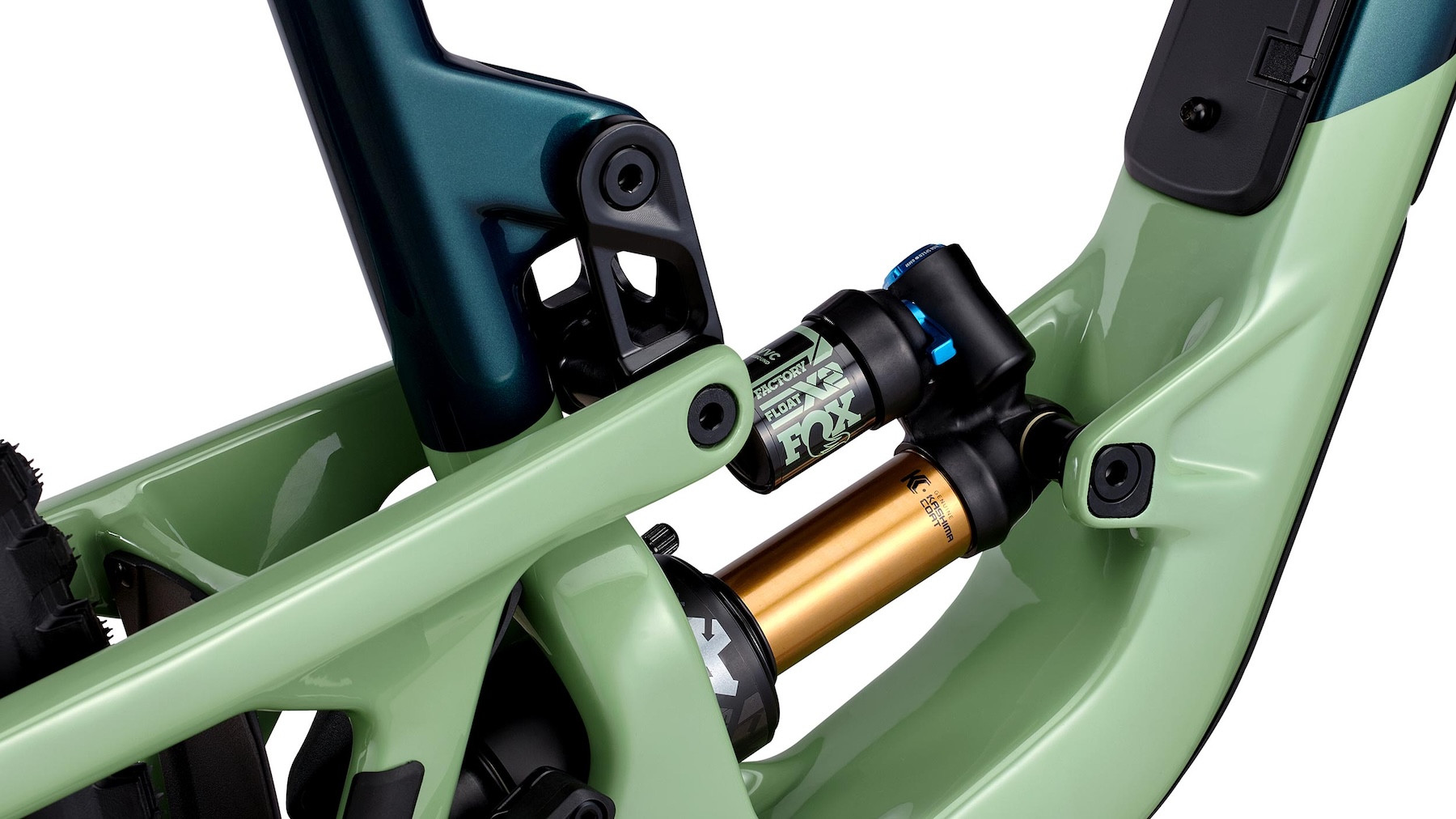
Rocky Mountain doesn’t publish full kinematics graphs for the Altitude, but says that its leverage rate increases slightly in the last 25 mm of travel to peak at 36% total progression, which should make for quite a bit of bottom-out resistance while ensuring the frame plays well with coil shocks, too. Rocky Mountain also notes that they’ve taken steps to minimize pedal kickback, which can settle the amount of feedback translated to the rider, but sometimes at the expense of pedaling response under power.
As with the updated Instinct, Rocky Mountain uses a size-specific suspension tune for each of the Altitude’s four frame sizes to better accommodate the needs of different-size riders. The Altitude keeps the RIDE-4 geometry adjustment system, allowing folks to tune geometry via a flip chip at the forward shock mount. A flip chip at the lower link also allows for full-29” or mixed-wheel compatibility, but only on Medium through XL sizes — riders on the size Small only have a full-27.5” wheel option.
Rocky Mountain continues to offer the Altitude in both aluminum and carbon fiber frame versions, with higher-spec models and the frameset option only available in carbon. The carbon Altitude gets Rocky Mountain’s suitably Canadian-themed PenaltyBox 2.0 downtube storage, but both frames get a bottle mount on the downtube and an additional accessory mount under the top tube. Unsurprisingly, the updated frame gets a SRAM UDH as well.
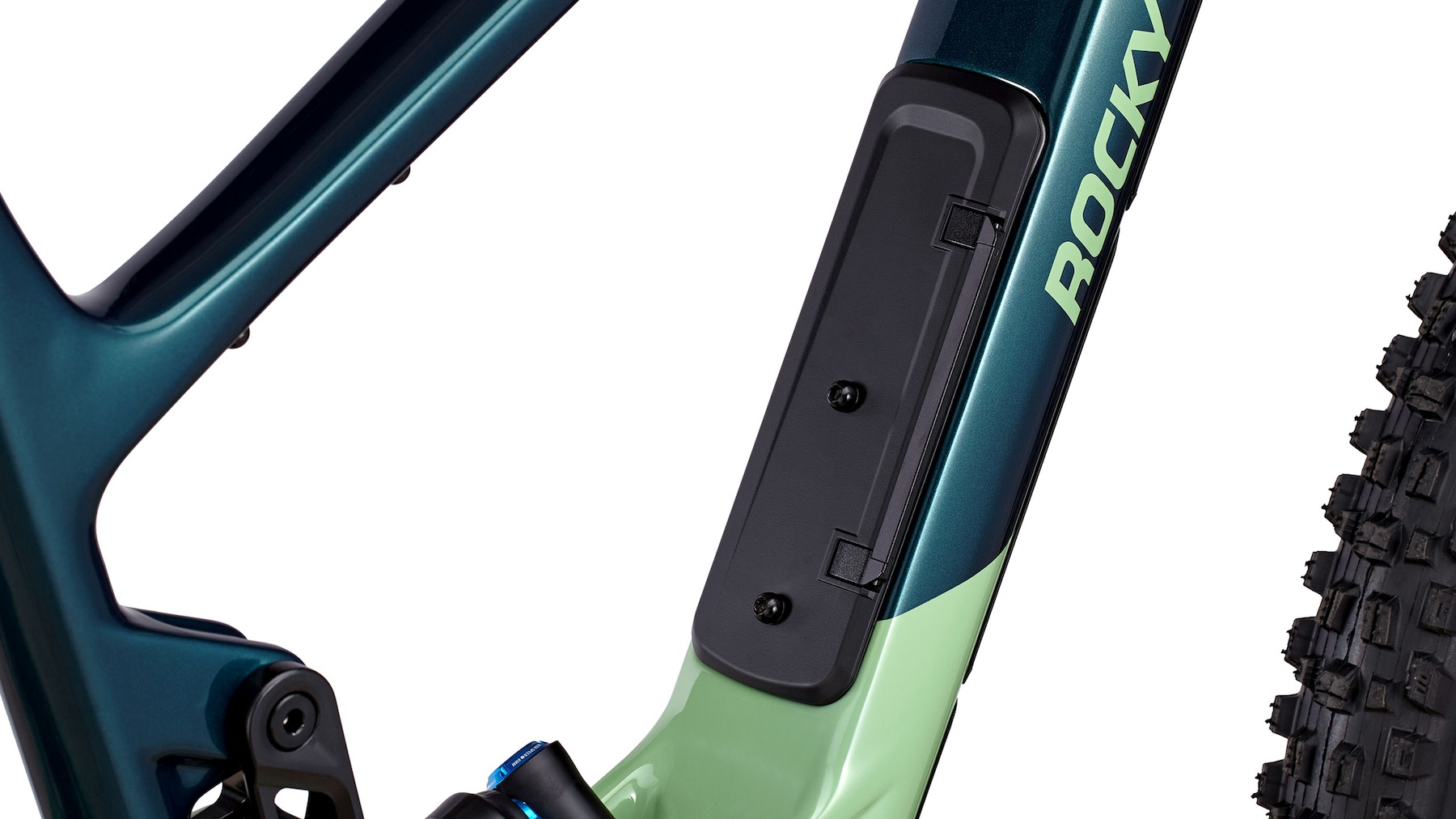
Another noteworthy aspect of Rocky Mountain’s bikes that caught my eye is the transferable warranty. Any Rocky Mountain comes with a 5-year warranty that is transferable to second owners, which is great to see in the spirit of supporting future buyers in the used market.
Fit & Geometry
Not content with a reinvented suspension layout, Rocky Mountain has also pushed the Altitude’s geometry measurements toward the more progressive end of the spectrum — while still including an impressive range of adjustability via the RIDE-4 flip-chip arrangement.
The outgoing Altitude’s RIDE-9 flip chip was more complex in its options, but the neutral option provided a 65° head angle, 480 mm reach, 634 mm stack, and adjustable 437–448 mm chainstays in the size Large. The new Altitude gets substantially longer and slacker, with a 63.5° head angle, 480 mm reach, 639 mm stack, and 450 mm chainstay for a size Large in the neutral RIDE-4 setting and 29” wheel setup.
The prior Altitude’s slackest setting provided a 64.4° head angle whereas the new one drops as low as 63°, so it’s a slacker bike by a good margin. The seat tube angle has also been steepened substantially, from 76° on the outgoing Altitude to 77.5° on the new one (again, in the neutral setting), putting the updated Altitude more in line with other newer Enduro bikes.
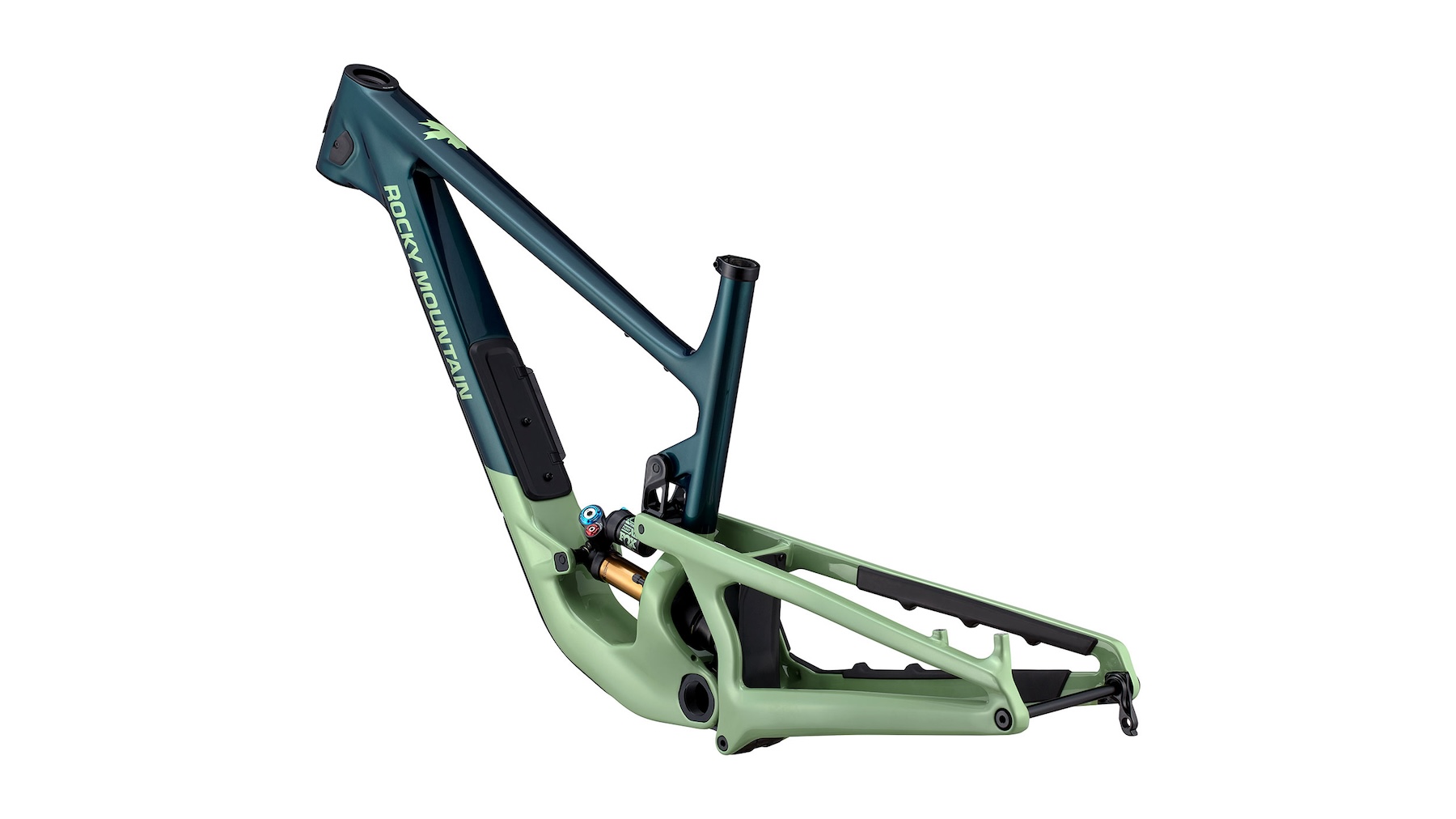
Opting for the mixed-wheel configuration does an impressive job of preserving nearly identical geometry measurements as the 29” setting, with the only real differences being the inherent decrease in bottom bracket drop due to the smaller rear wheel and a 0.1° difference in head tube and seat tube angles, depending on the RIDE-4 position. We’ve mentioned the irksome lack of an industry-wide standard as far as how bottom bracket drop is measured on mixed-wheel bikes, and it’s worth noting that Rocky Mountain elects to measure it relative to an imaginary line drawn between the front and rear axle.
As with the new Instinct, Rocky Mountain has implemented size-specific chainstays for the Altitude via a size-specific rear triangle. The 2-position chainstay adjustment from the prior Altitude is no longer, and the new fixed position puts the Small at a rather short 427 mm chainstay measurement, where the Medium gets 440 mm, and Large and XL top out at 450 mm.
Riders looking for additional tinkering capability will be pleased to also see that the Altitude includes a reach-adjust headset in every build spec. Frames ship with the neutral +0 mm cups installed, with +/– 5 mm cups included as accessories. The cups drop in (no headset press needed) for easy tinkering.

The Builds
Rocky Mountain offers an extensive range of builds for the new Altitude, from the RockShox Flight Attendant Altitude Carbon 99 to the aluminum-framed Altitude Alloy 30. Builds offer a mix of RockShox and SRAM parts as well as options from Fox and Shimano, and while most models are equipped with an air shock, coil-shock options are available in both the Carbon 70 and Alloy 70 models. Rocky Mountain also kindly includes a Maxxis DoubleDown-casing rear tire, and all bikes except for the Alloy 50 and Alloy 30 get a single Cushcore XC insert in the rear wheel as well.
Highlights from each model’s available builds are as follows:
- Drivetrain: Shimano Deore
- Brakes: Shimano MT6120 (w/ 203 mm rotors)
- Fork: RockShox Zeb Select RC (170 mm)
- Shock: Fox Float X Performance
- Wheels: WTB ST Light i30 TCS 2.0 rims w/ Shimano TC500 hubs
- Dropper Post: X-Fusion Manic Composite (SM: 150 mm; MD: 170 mm; LG–XL: 200mm)
- Drivetrain: Shimano XT / SLX, Race Face Aeffect Cinch cranks
- Brakes: Shimano SLX Trail (w/ 203 mm rotors)
- Fork: Fox 38 Performance (170 mm)
- Shock: Fox Float X Performance
- Wheels: WTB ST Light i30 TCS 2.0 rims w/ Shimano XT rear hub, Rocky Mountain SL front
- Dropper Post: X-Fusion Manic (SM: 150 mm; MD: 170 mm; LG–XL: 200mm)
- Drivetrain: Shimano XT / SLX, Race Face Aeffect R Cinch cranks
- Brakes: Shimano XT Trail (w. 203 mm rotors)
- Fork: Fox 38 Factory (170 mm)
- Shock: Fox DHX2 Factory
- Wheels: Race Face AR 30 w/ DT Swiss 370 rear hub, Rocky Mountain SL front
- Dropper Post: X-Fusion Manic (SM: 150 mm; MD: 170 mm; LG–XL: 200 mm)
- Drivetrain: Shimano XT / SLX, Race Face Aeffect Cinch cranks
- Brakes: Shimano XT Trail (w/ 203 mm rotors)
- Fork: Fox 38 Performance (170 mm)
- Shock: Fox Float X Performance
- Wheels: WTB ST Light i30 TCS 2.0 rims w/ DT Swiss 370 rear hub, Rocky Mountain SL front
- Dropper Post: X-Fusion Manic (SM: 150 mm; MD: 170 mm; LG–XL: 200mm)
- Drivetrain: Shimano XT
- Brakes: Shimano XT Trail (w/ 203 mm rotors)
- Fork: RockShox Zeb Select+ (170 mm)
- Shock: RockShox Super Deluxe Ultimate
- Wheels: Race Face AR 30 w/ DT Swiss 370 rear hub, Rocky Mountain SL front
- Dropper Post: Race Face Turbine R (SM: 150 mm; MD: 175 mm; LG–XL: 200 mm)
- Drivetrain: Shimano XT, Race Face Turbine Cinch cranks
- Brakes: Shimano XT Trail (w. 203 mm rotors)
- Fork: Fox 38 Factory (170 mm)
- Shock: Fox DHX2 Factory
- Wheels: Race Face AR 30 w/ DT Swiss 350 rear hub, Rocky Mountain SL front
- Dropper Post: Race Face Turbine R (SM: 150 mm; MD: 175 mm; LG–XL: 200 mm)
- Drivetrain: Shimano XTR w/ Race Face Turbine Cinch cranks
- Brakes: Shimano XTR Trail (w/ 203 mm rotors)
- Fork: Fox 38 Factory (170 mm)
- Shock: Fox Float X2 Factory
- Wheels: Race Face ARC Carbon 31 w/ DT Swiss 350 hubs
- Dropper Post: Fox Transfer Factory (SM: 150 mm; MD: 175 mm; LG–XL: 200 mm)
- Drivetrain: SRAM X0 Transmission
- Brakes: SRAM Code RSC (w/ 200 mm SRAM HS2 rotors)
- Fork: Rockshox Zeb Ultimate Flight Attendant (170 mm)
- Shock: RockShox Super Deluxe Ultimate Flight Attendant
- Wheels: Race Face ERA Carbon
- Dropper Post: RockShox Reverb AXS (SM: 150 mm; MD–XL: 170 mm)


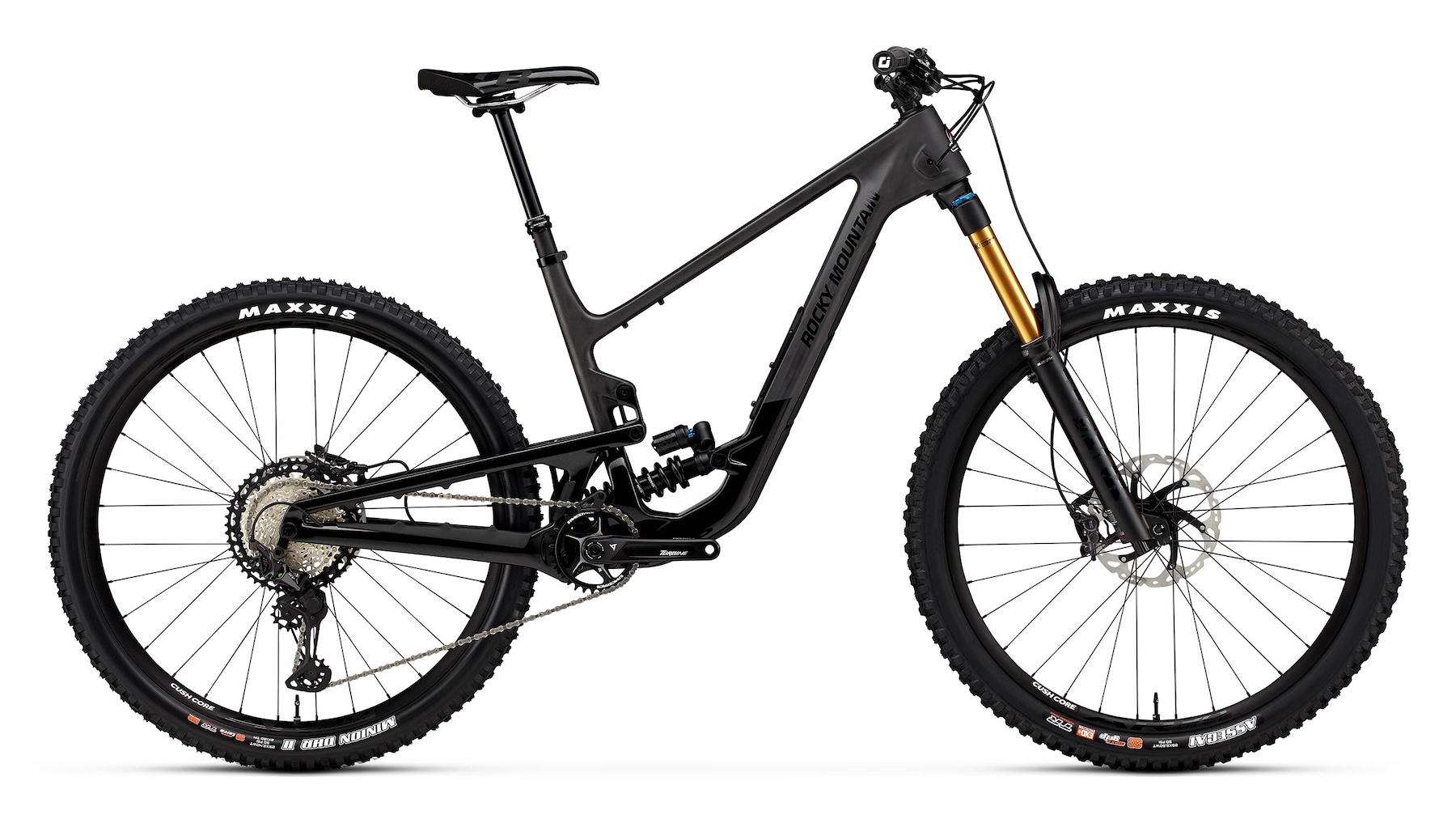
Folks interested in the DIY route can also buy the Altitude Carbon frameset for $4,099 USD / $4,999 CAD, which includes a Float X2 Factory shock and the same reach-adjust headset that’s included on the complete bikes.
Some Questions / Things We’re Curious About
(1) The outgoing Altitude was a highly versatile take on the modern Enduro bike, offering a more lively and engaging feel at the expense of high-speed composure. It’s clear that Rocky Mountain is moving the Altitude in a more aggressive direction, but how much of that versatility will remain?
(2) The Altitude’s resurrection of the LC2R suspension design promises suspension performance improvements across the board, emphasizing a predictable feel and low pedal kickback. How will it compare to other bikes with a similar suspension layout and low-slung design?
(3) With nearly identical geometry between the mixed-wheel and 29” configurations, which types of rider benefits from each of the Altitude’s two wheel-size options?
FULL REVIEW
The prior-generation Rocky Mountain Altitude felt caught between being a modern Enduro race rig and a more versatile do-it-all Trail bike — and the fact that it shared a frame (apart from the shock mount) with the Instinct Trail bike probably had a lot to do with that.
So when Rocky Mountain updated the Instinct earlier this year (Full Review coming soon) and dropped the bolt-on shock mount that facilitated the dual-purpose frame from the prior-generation bike, we were left to wonder what that meant for the updated Altitude that seemed likely to follow. It turns out that Rocky Mountain had a big surprise up their sleeve — a radically different frame design with a completely different suspension layout than we’d seen from them before.
(Rocky Mountain brought back the LC2R acronym for the Altitude, but the actual layout is pretty different from earlier designs to bear that name.)
And while the new suspension layout understandably garnered a lot of attention, the Altitude’s geometry got a big overhaul, too. So how would it all come together on the Trail? I was eager to find out.

Fit & Sizing
David Golay (6’, 170 lb / 183 cm, 77.1 kg): Rocky Mountain’s recommended sizing chart for the Altitude puts me a little bit above the middle of the band for the Large frame and at the very bottom end of the range for the XL one, and that feels about right. The Large frame that I’ve reviewed worked well for me with the reach adjust headset in the longer (+5 mm) position, but if I had to deviate from there in one direction or the other, I’d easily opt to size up to the XL over dropping down to the Medium.
If I have any quibbles with the fit of the Large Altitude, it’s that I’d love to see a slightly taller headtube to produce a taller stack height. It’s hard to say I have a specific preferred number since (like most things on bike fit) it’s dependent on a lot of the other variables, and the Large Altitude’s 639 mm stack figure isn’t actually all that short on paper. But I could still handle more easily.
I was able to get the bars to a place I was happy with by running a 40 mm rise bar and 20 mm of stem spacers but it’d be great to have a bit more flexibility in that setup. I get keeping the stack height not super tall to allow for more room for adjustment to a point, and I am at the taller end of the sizing range for the Large frame, but the way things shook out on the Altitude left me thinking a bit more stack would work for most folks who’d fit on a Large frame.
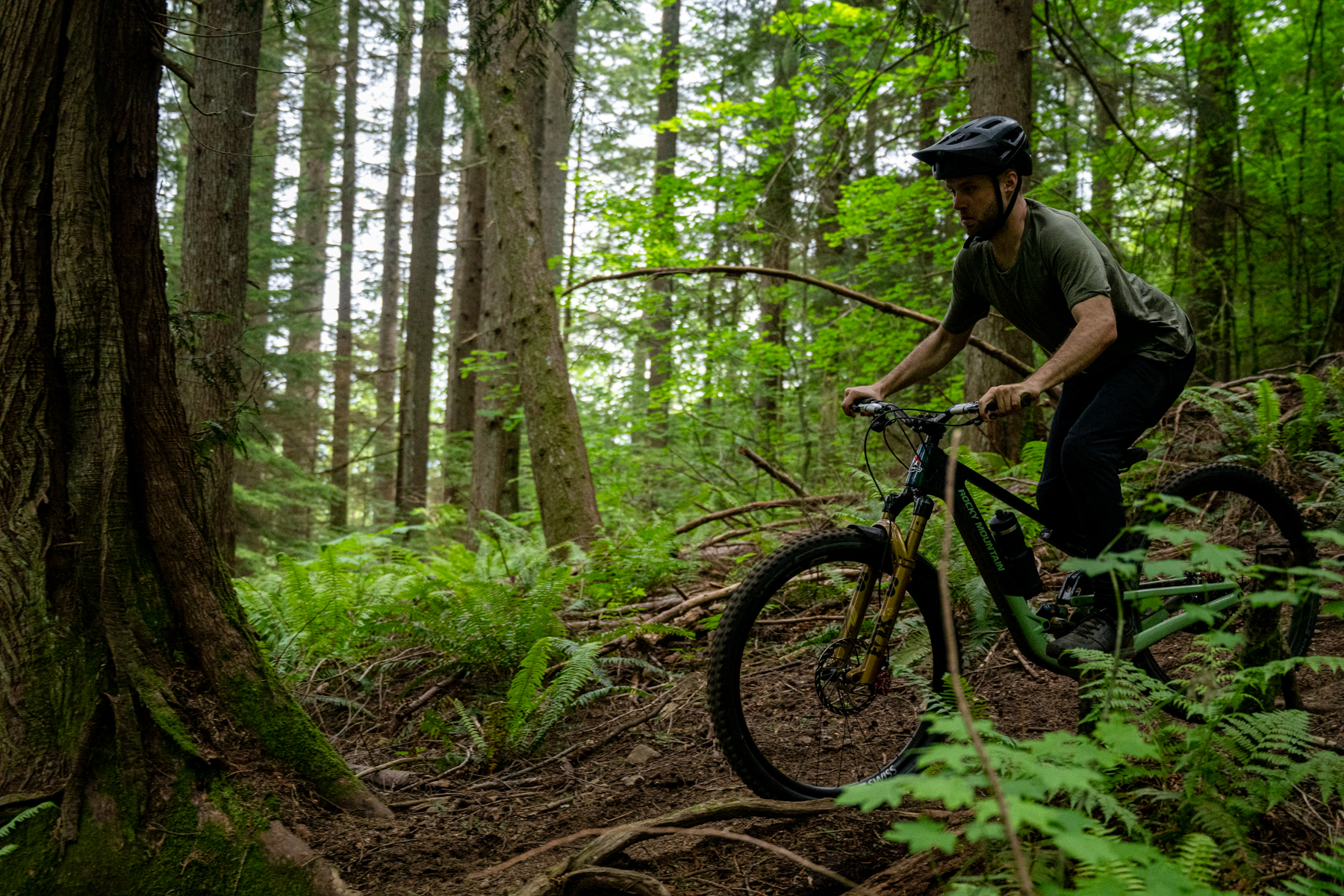
Climbing
The prior-generation Altitude’s suspension remained quite active under pedaling power, and while its efficiency was okay overall, I personally would have preferred a bit firmer pedaling performance even if it came at the expense of some traction / compliance under power. It seems like Rocky Mountain agreed because the new Altitude is a big step up in pedaling efficiency over the old one.
That’s not to say that Rocky Mountain has swung wildly in the other direction, though. The Altitude’s pedaling performance feels fairly typical of a modern Enduro bike — i.e., solid efficiency so long as you keep your pedal stroke reasonably smooth while still remaining somewhat active and compliant — whereas the prior model was decidedly on the more cushy end of the spectrum (particularly by 2024 standards). It feels like the industry is narrowing in on a relatively tight window of pedaling characteristics for this class of Enduro bikes these days. There are increasingly few bikes that either feel hyper-efficient at the expense of any and all compliance (e.g., the first-generation Privateer 161) or that pedal truly poorly, and the Altitude is right in line with that trend.
Not that I’m complaining. The general window that the industry is converging on is a good one in my book, and I’m quite happy with the way that the Altitude pedals. There’s still some variation in overall pedaling characteristics across ~160mm-travel Enduro bikes, to be sure, and if anything, the Altitude is a touch on the more efficient / less compliant end of that spectrum, but it’s by no means an outlier. As is going to be something of a common theme throughout this review, the Altitude’s climbing performance mostly stands out for being well-rounded and easy to adapt to, rather than feeling like it’s doing anything quirky or out there. (Check out our Deep Dive on the Altitude for much more granular comparisons to a whole bunch of other big Enduro bikes.)
The Altitude’s 77° effective seat tube angle sounds plenty steep on paper, and while I wouldn’t say that it feels slack on trail, the actual seat tube angle is offset a good bit from the effective one, and the Altitude’s seated pedaling position feels dialed back a touch compared to many ultra-steep winch-and-plummet sorts of modern Enduro bikes — particularly at my fairly-tall 785 mm seat height (center of the bottom bracket to top of the seat, with 170 mm cranks). The more frequently your climbing involves technical, chunky sections rather than just grinding up a fire road, the more that’s likely to be a good thing; I occasionally wished the Altitude’s seat tube was a touch steeper on especially heinously steep bits, but have gotten along with it well overall.
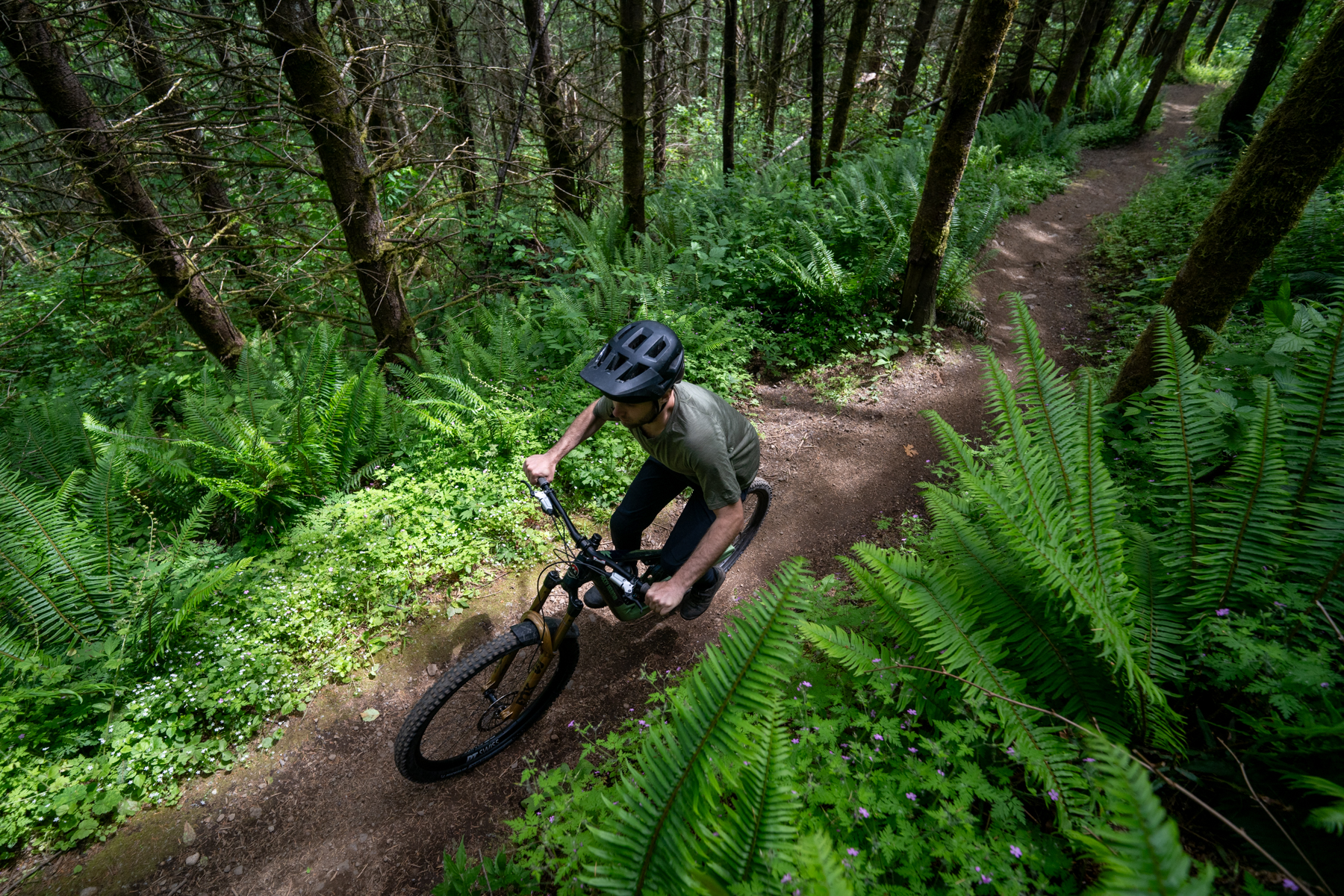
Particularly in the slacker geometry settings, the Altitude’s bottom bracket does become notably low, and that can make ultra-rocky technical climbing a little trickier than it might be with more pedal clearance to work with. Of course, as we’ve often noted, the longer wheelbases of bigger Enduro bikes tend to be a hindrance when it comes to technical climbing as compared to more compact (and usually shorter-travel) Trail bikes, so if that’s truly a top priority, it’s worth thinking through if you want a bike in this class at all. Bumping the Altitude to the higher / steeper geometry settings opens up a bit more clearance, but doesn’t erase the general tradeoffs that are inherent to being on a longer, slacker bike in that kind of terrain.
Descending
As with its performance on the way up the hill, the Altitude stands out most for being well-rounded and adaptable when you point it back down the hill. It’s not a bike that feels like it was meant to do any one super specific thing well at the expense of other traits — and that’s exactly what makes it good, and easy to recommend to a fairly wide range of folks who are in the market for a ~160mm-travel Enduro bike.
I wouldn’t say that the Altitude is all that wildly versatile, though, if you define “versatility” to mean that it can cover double duty as an all-around Trail bike and a burlier Enduro one similarly well. The new Altitude is emphatically in the latter category — much more so than the prior-generation Altitude — but instead stands out for being intuitive and adaptable in its body positioning, handling, and overall riding approach within that class of race-oriented Enduro bikes. It’s a bike that wants to be pushed hard and be ridden with pace on steep, fast descents, but it’s also a bike that I can see working well for a lot of different folks who are in the market for that sort of bike. There are quite a few different flavors of burly descents out in the world, and the Altitude feels especially adaptable to handling a lot of them well.
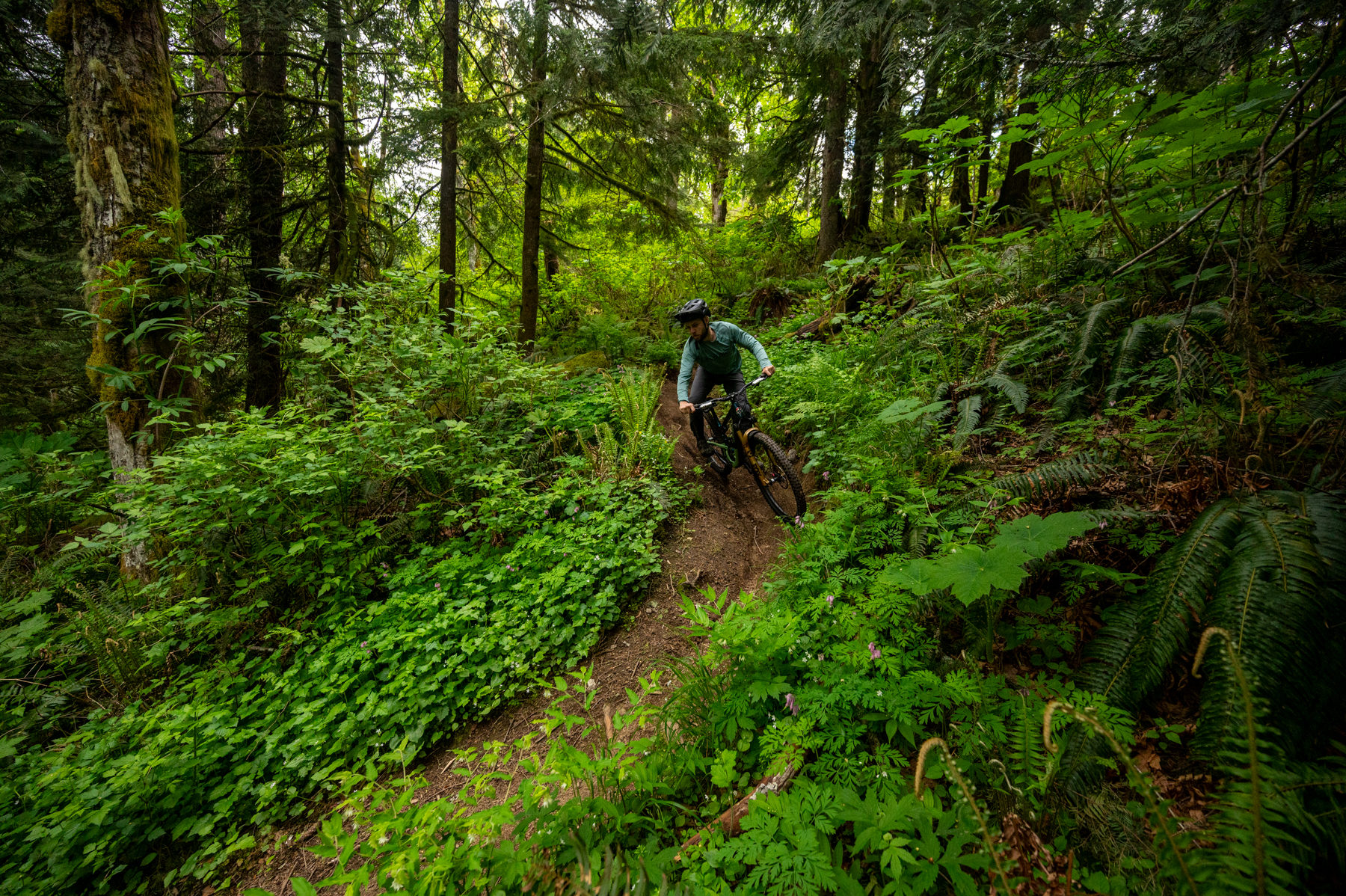
For one thing, the overall sweet spot in terms of body positioning and weight distribution that the Altitude offers is quite broad. It’s probably not the ideal bike for folks who specifically want to ride from a super forward position with a bunch of weight over the front end, but I’ve found the Altitude to be quite happy to do just about anything else (somewhat depending on cockpit setup / handlebar height). It’s notably tough to unsettle or get out of sorts, even with fairly large weight shifts when mistiming pulling for a gap over a hole at speed or the like.
But that’s not to say that the Altitude is a one-dimensional bulldozer of a bike that’s super stable to a fault. Kind of the opposite, in fact. The Altitude is relatively composed at speed in steep, rough terrain, but for how well it does there, it’s also impressively lively and energetic when you want to pull up over a hole or boost off a natural lip, without needing to set the suspension up massively firm to get there. It is a fairly focused go-fast Enduro bike that wants to be pushed a bit and ridden quickly, but there are a lot of different ways to go about doing so, and the Altitude is impressively happy to stay planted and run stuff over when called upon, or ride actively and precisely when that’s the way to go. That makes it both an easy bike to recommend to a relatively wide range of riders who aren’t specifically looking for something different, and as an Enduro race bike (or an all-around bike if grinding to the top of big descents is your thing) that’ll handle a wide range of terrain and types of (burly) trails quite well.
The big range of adjustability built into the Altitude helps there, too. There’s a lot of leeway to tweak the handling characteristics of the Altitude to your preferences between the Ride-4 flip chip and the rear wheel size options (apart from the Small frame, which is a dedicated 27.5’’ bike). And in contrast to the prior-generation Altitude, where the more complex Ride-9 chip left a wider range of adjustments than felt coherent, the pared-down options on the new bike offer more useful guide rails to keep things from getting too far off in left field.
That said, both flip chips also feel like they make a substantial difference to the Altitude’s leverage curve, and thus require some shock setup tweaks to get the most out of them. Given that I think most folks will use them to find their preferred setup and leave things there, rather than making big setup changes on a ride-by-ride basis, I don’t see that as being a big deal, but if you’re looking to tinker with your Altitude, I’d take some care to revisit your suspension settings as you do so.
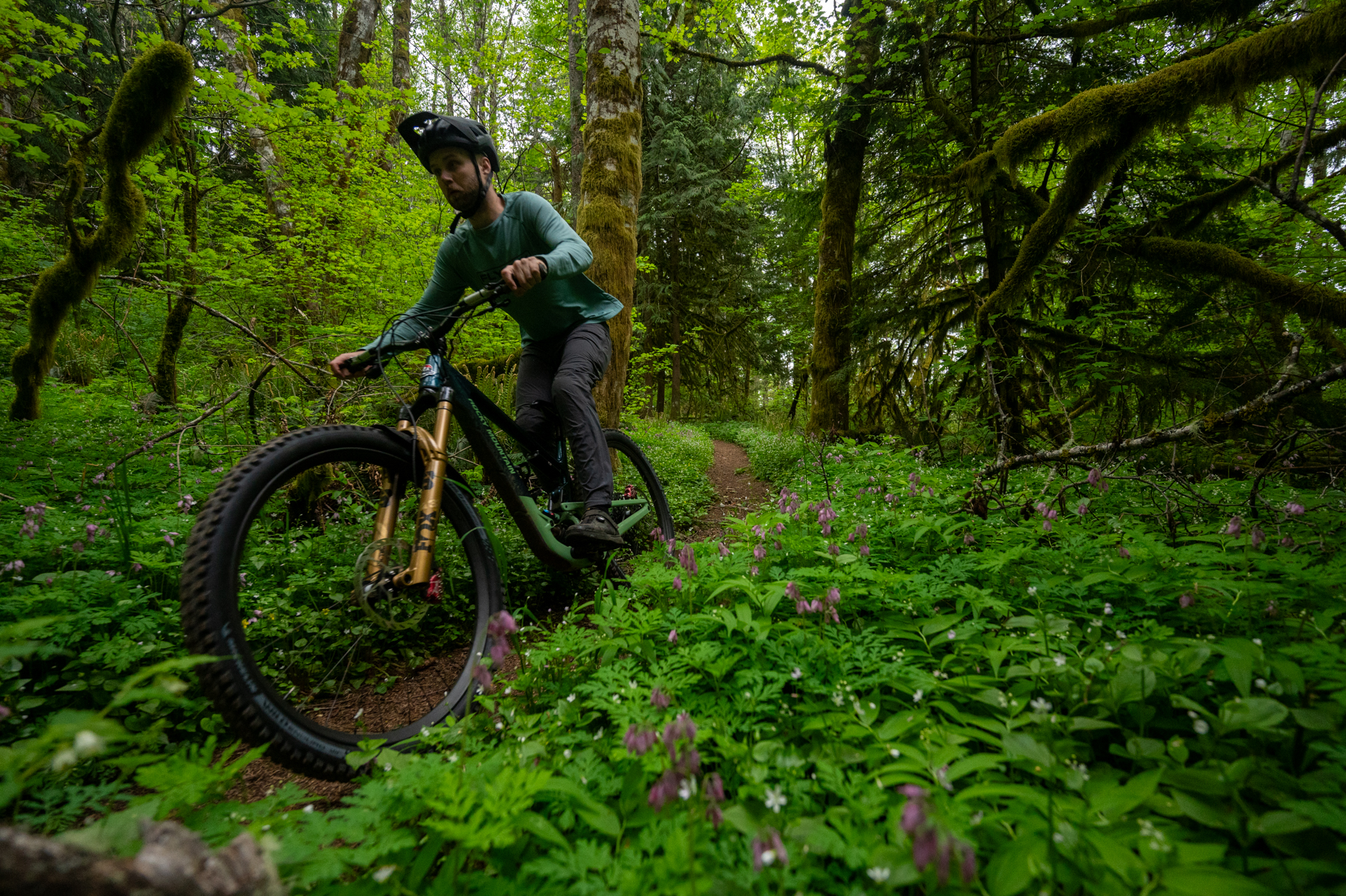
For my home trails, which tend to be quite steep but not especially rocky, I settled on the full 29’’ setting and position #2 as being my overall preferred setup. The relatively low bottom bracket height (34 mm drop) that it produces feels great in well-supported corners, without going overboard; the fully slack position #1 both slackened the headtube a little more than I found ideal, and made the rear suspension more progressive than I wanted, particularly with the stock Fox Float X2 air shock. Going to the steeper settings both raises the bottom bracket and makes the beginning part of the suspension appreciably firmer, providing more support and liveliness early in the travel. When riding flatter, more rocky trails that involved more technical climbing and maneuvering through awkward bits of chunk, bumping up to position #3 helped make things a little more manageable.
The MX wheel setup on the Altitude feels relatively coherent, too, though switching to it increases the overall leverage ratio of the suspension a touch, so I found myself wanting to increase the spring rate and rebound damping slightly to compensate. As per usual for bikes that are convertible between full 29 and mullet setups, the smaller rear wheel makes the back end quicker to step out, and requires a bit more steering input through the bars to countersteer and correct for the sharper turn-in from the back of the bike. If you’re trying to make the Altitude feel a little more playful and quicker handling, the MX setup would be worth considering; I personally prefer the calmer steering and more planted feel of the stock 29er arrangement.
With the setup dialed in for my preferences, I’ve gotten along with the Altitude extremely well — first and foremost because of how well-rounded and adaptable it is. The Altitude is a notch more stable and composed at speed than most modern Enduro bikes that I’d classify as being notably lively and sharp handling, but it is also quite a bit more energetic and nimble than the most super planted bikes in the class, and does all that while being happy to be ridden from a relatively wide range of body positions.
[Check out our Deep Dive on the Altitude for a whole lot more of those comparisons.]
The Altitude is emphatically a go-fast Enduro race bike rather than a more versatile Trail / All-Mountain sort of ride, but it’s an easy bike to recommend to a lot of folks who want something in that class given how adaptable and intuitive it is.
The Build
We got our Altitude in for review as a frameset with the stock Fox Float X2 Factory rear shock, and I used the opportunity to build it up with primarily review parts plus a few old favorites. The initial build (and the one we took our measured weight of 34.26 lb / 15.54 kg from) consisted of a Fox 38 Grip X2 fork (Full Review coming soon), Enve AM30 wheels with Continental Kryptotal DH tires, SRAM Maven Ultimate brakes, and a TRP Evo 12 drivetrain with TRP’s carbon cranks. The build evolved a bit over my time on the Altitude, mostly just due to my rotating slate of review parts, but there’s nothing in particular about the Altitude that tempted me to do anything outside of the ordinary in building up a ~160mm-travel Enduro bike.
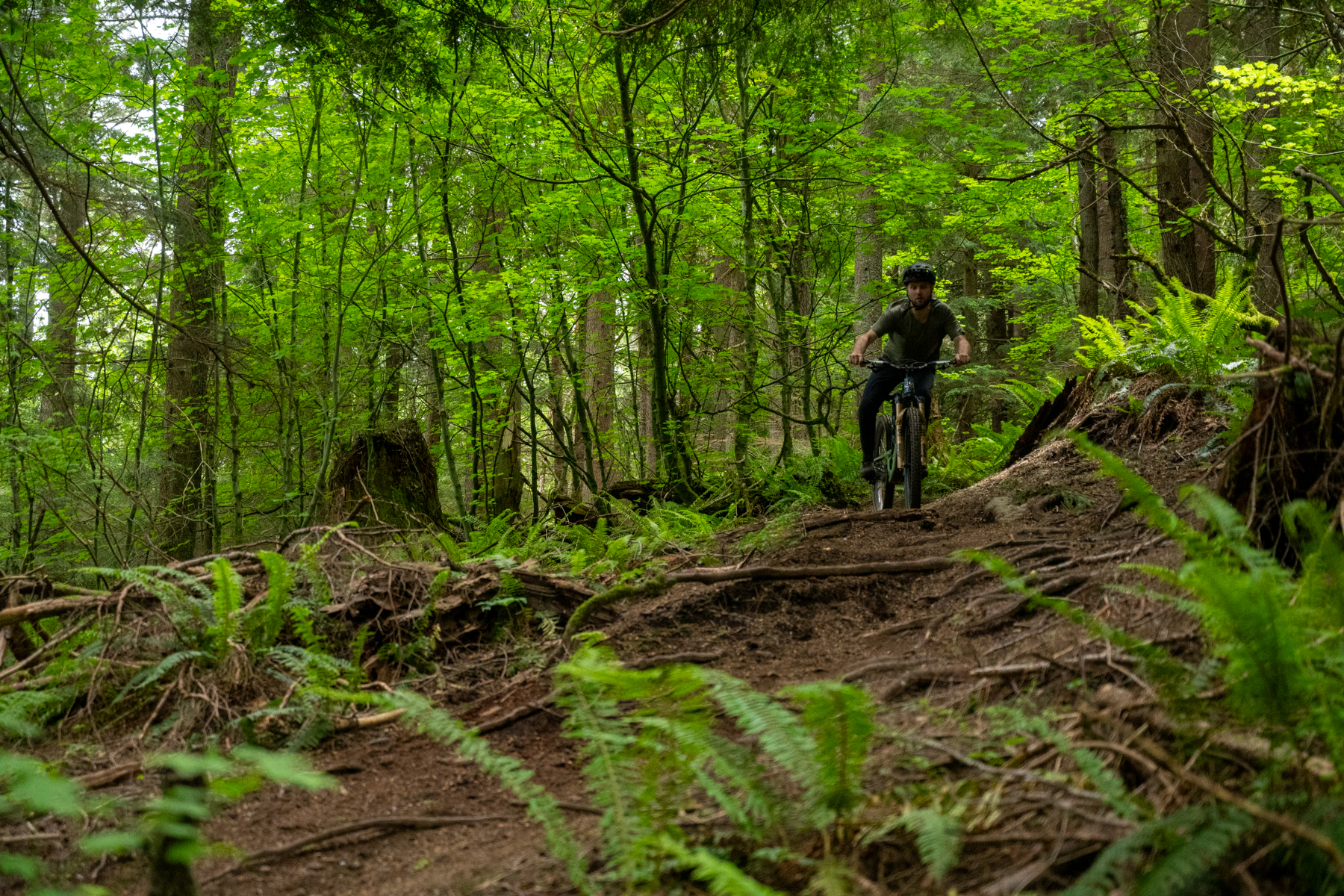
I have also started testing an as-of-yet unreleased coil shock on the Altitude, and while I’m overall quite happy with the performance of the stock Fox Float X2 shock, I do think the Altitude is a very good candidate for a coil. The leverage curve (particularly in the slacker settings of the Ride-4 chip) is quite progressive, and even with no volume spacers in the air can of the Float X2, its spring curve still feels a little soft through the middle part of the stroke before ramping up a touch more sharply than I’d prefer deep in it. It’s not stark by any means — the Altitude rides very well with the Float X2 — but putting a coil shock on highlighted the ways that the combined spring / leverage curve could be a little smoother and more consistent.
Rocky Mountain does offer a couple of coil-shock-equipped builds on the Altitude and I’d probably opt for the C70 Coil Shimano build if I were buying an Altitude as a complete bike. My only real gripe with that build is that the 175mm-travel dropper post on the Large is shorter than I’d like (I have more than enough room to run a 210 mm OneUp); the Altitude C90 Rally Shimano build does bump up to a 200 mm post for the Large frame but I’d like to see that as the default rather than the exception. The shock tunnel on the Altitude eats into seatpost insertion a bit, but I’d still bet that most folks on the Large frame could clear a 200 mm post.
On the plus side, Rocky Mountain deserves kudos for putting an appropriately beefy tire combo on the Altitude — most builds come with a Maxxis Assegai MaxxGrip Exo+ front tire and a Minion DHRII MaxxTerra DoubleDown rear, with CushCore Trail inserts at both ends. I’ve long since lost track of how many times I’ve complained about bikes in this class coming with too light casings and/or inadequately sticky rubber, and while I might personally have just put a DoubleDown casing up front and skipped the inserts, I can’t fault Rocky for chasing weight savings at the expense of adequate sidewall support / protection.
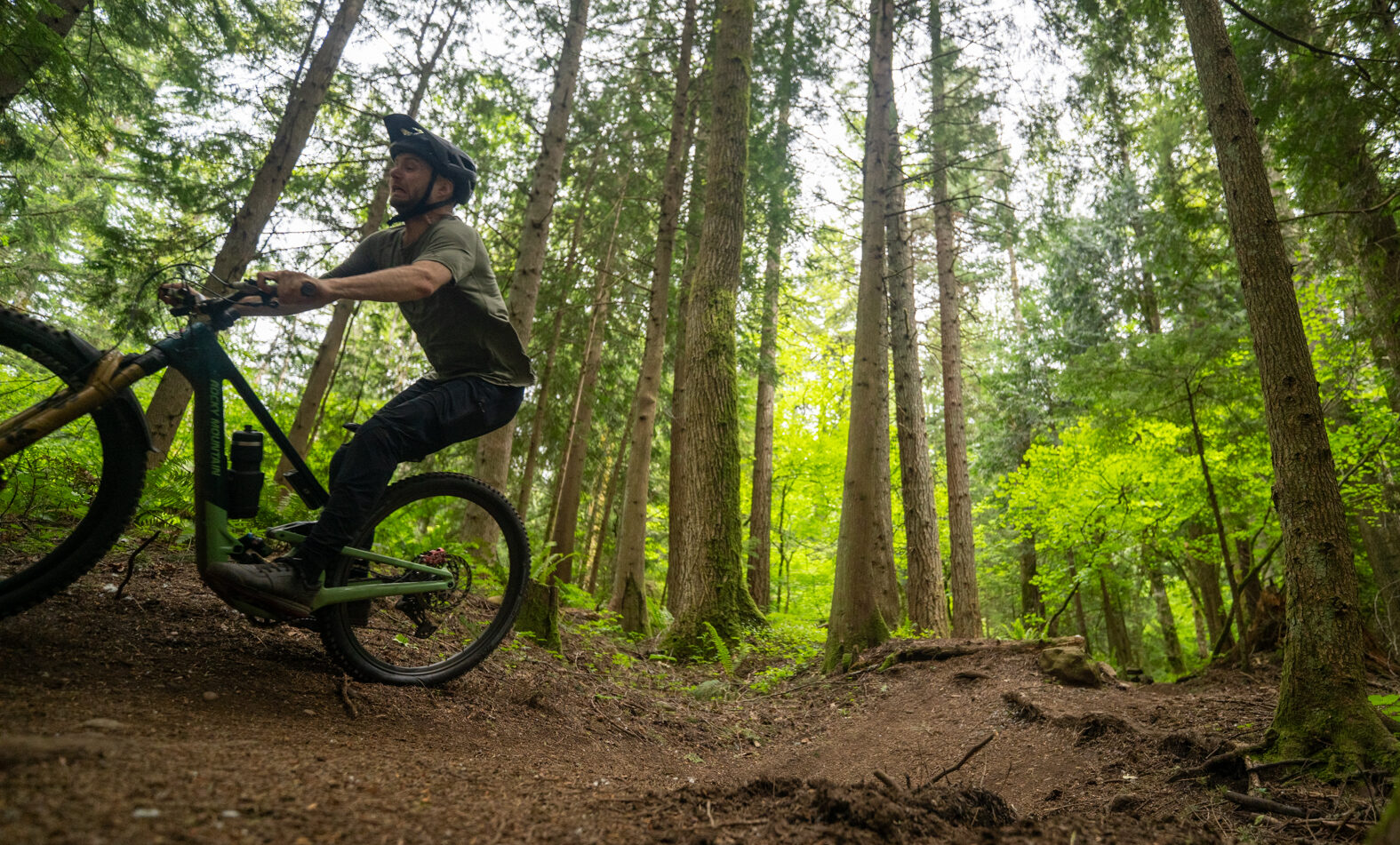
Rocky Mountain’s “Penalty Box” (give whoever named that a raise) downtube storage also feels particularly well executed. The lid is easy to open and close and feels quite secure. The opening is huge, and the space inside the downtube is even bigger. Just be warned that items put into the frame on their own (i.e., without the supplied storage bags) can work their way into the kinked lower portion of the downtube and get… quite stuck. There’s a small hole in the bottom of the downtube that you can use to poke them back out with a wire, but I had a pack of gummies disappear to the shadow realm mid-ride when I really could have used them.
The Penalty Box also helps facilitate some of the best internal cable routing I’ve dealt with to date, at least on the carbon Altitude frames. It’s fully guided and quite clean / easy to route, and features ports on both sides of the headtube for the rear brake line so that things stay tidy no matter which side of the bar you run your rear brake. There’s a short interruption in the guide tubes underneath the Penalty Box hatch so that you can put the hose into the desired tube in the forward part of the frame (there are separate ones for the left- and right-hand ports at the headtube) and it’s quite straightforward to work on. The only minor note I have for folks building up their own Altitude frames is that the brake hose has to go through a couple of bends to get around the shock tunnel, and thus ends up being quite long. If you’re trying to move a brake from a similarly-sized frame, odds are good that you’ll need a longer hose.
It’s not something that I expect most folks will do often, so it’s not a huge deal at the end of the day, but the rear shock mount hardware and the MX / 29 flip chip on the Altitude are tricky to work with. There’s very little clearance around the shock mounting bolt to reach in and hold things together and between the spacers on the (non-standard) 35 x 8 mm bearing hardware and the flip chips themselves, so keeping everything in place when installing a shock or when toggling between rear wheel sizes is a headache. I’ve found it easiest to put the bike in a workstand and remove both the rear wheel and the bolt-on fender inside the rear triangle to access the various pieces from the rear. The front shock mount, which houses the Ride-4 chip, is much more manageable, though it uses also-funky 40 x 10 mm shock hardware.

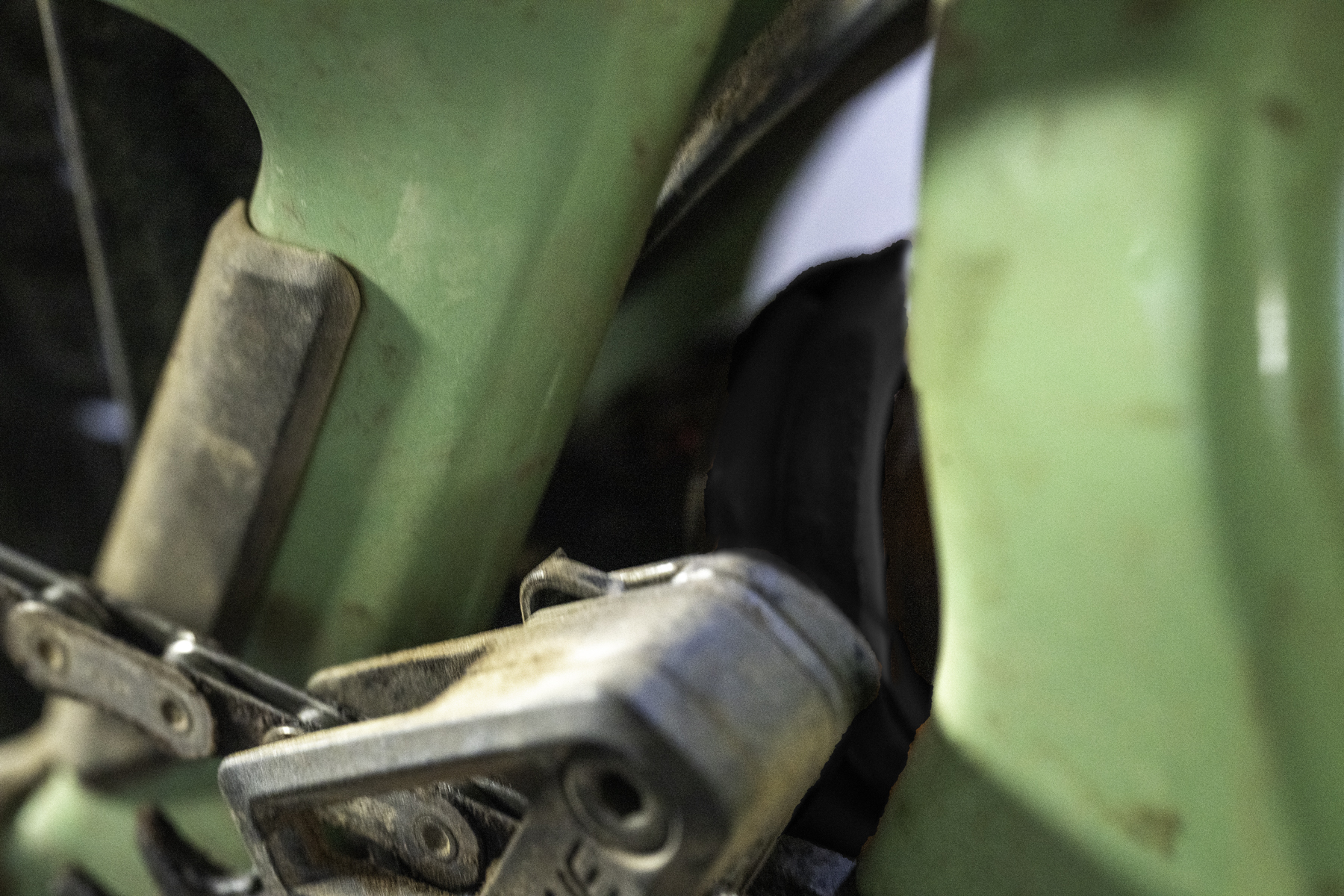
The giant main pivot assembly on the Altitude did come slightly loose after a handful of rides and began to creak a bit. Taking it apart (using the supplied custom pin spanner tool) and adding a little thread locker took care of things and it’s stayed tight and quiet since. The Altitude’s chain slap protection offers good coverage and is mostly effective, but it’s not 100% silent, either; there’s a bit of muffled-but-audible chain noise when descending at speed, both with the TRP Evo 12 drivetrain that I used for most of the test period, and the SRAM GX Transmission one that I swapped in later, mostly to see how the chain noise compared. It didn’t make much of a difference.
[That’s with the updated chainstay guard that Rocky Mountain developed just before the bike launched; our frame showed up with an earlier version of the guard that left a portion of the chainstay just behind the chainring somewhat exposed, and was quite a bit louder. The new guard was an easy stick-on application and helped quite a bit to mitigate that noise. Reach out to Rocky Mountain if you got an early bike with the old protector.]
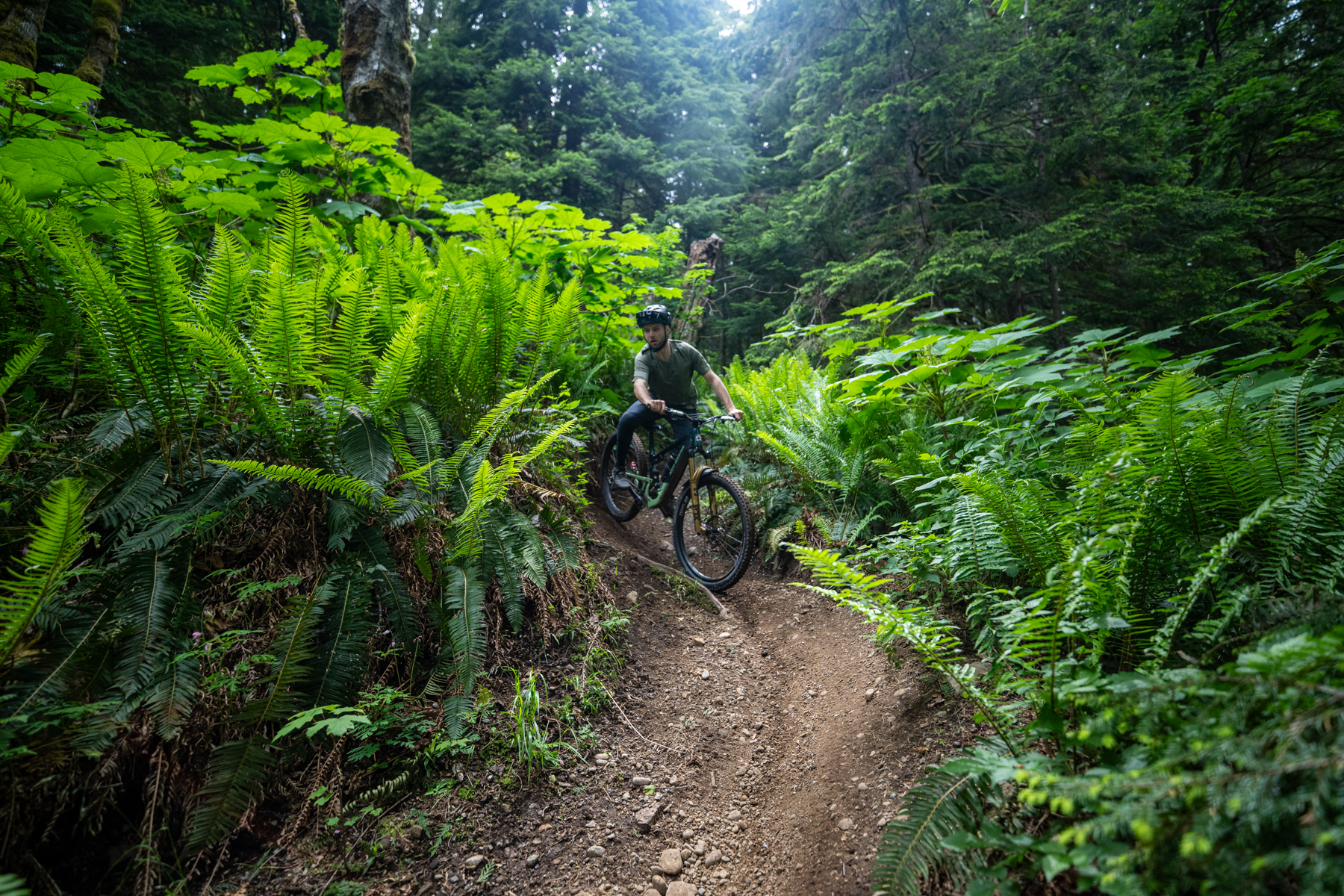
Who’s It For?
The Altitude is now firmly in Enduro race bike territory, but it’s an especially well-rounded option for that class, and it’s easy to imagine it working well for a lot of riders in a lot of different areas who want a fairly game-on go-fast sort of bike — whether they’re actually racing Enduro or just riding the sorts of trails that call for a big, stable bike and enjoy pushing the pace on them.
Of course, there are a lot of bikes for which that’s also true. But rather than feeling like there’s a clear cut specific sort of rider who will click with the Altitude in particular, it stands out for being especially well-rounded and adaptable — and that’s precisely what makes the Altitude special.
Bottom Line
With its latest update, the Altitude has gone from being a quick-handling sort of Enduro bike that felt versatile as an all-around Trail bike, but also somewhat under-gunned in really steep, fast terrain to being a much more game-on modern race bike. And while there are a lot of good options in that class these days, what makes the Altitude stand out most is how adaptable and intuitive it is across a big spectrum of trail conditions and riding approaches. The new Altitude is emphatically a bike for going fast on challenging descents (and pedaling back to the top of them), but within that window of use cases, it’s one of the most well-rounded 160 mm+ travel Enduro bikes we’ve been on to date.
Deep Dive Comparisons
BLISTER+ members and those who purchase our Digital Access Pass can check out our Deep Dive comparisons linked below. Get our Digital Access Pass to view all our Deep Dives and Flash Reviews, or become a BLISTER+ member today to get access to that and a LOT more, including the best worldwide Outdoor Injury Insurance, exclusive deals and discounts on skis, personalized gear recommendations from us, and much more.
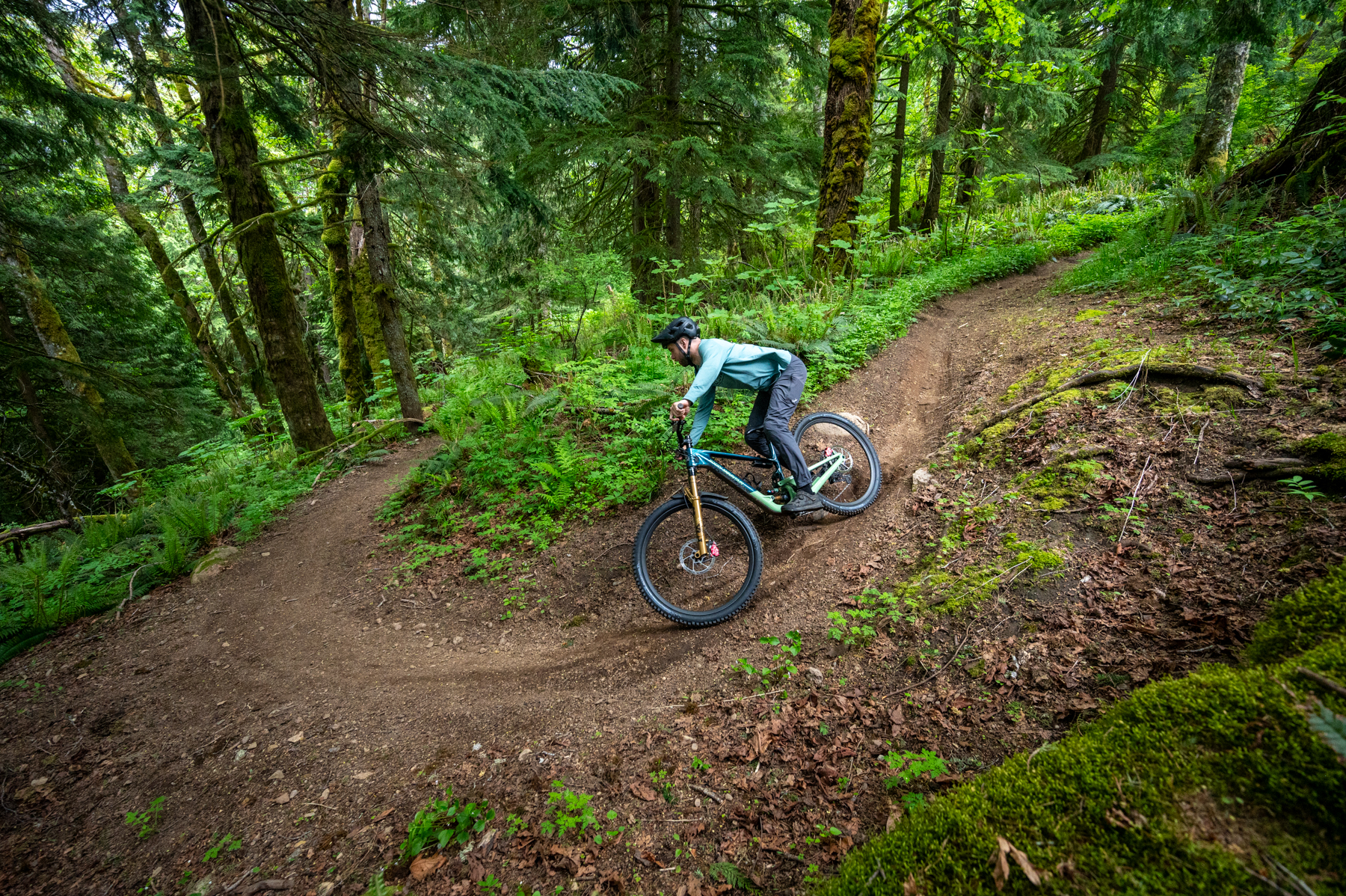
Deep Dive: 2024 Rocky Mountain Altitude
We compare the Rocky Mountain Altitude to the prior-generation Altitude, Orbea Rallon, Santa Cruz Megatower, Chromag Lowdown, Yeti SB160, Pivot Firebird, RAAW Madonna, Trek Slash, Ibis HD6, and Yeti SB165.
Blister’s Flash Reviews and Deep Dives are accessible to those who purchase one of our paid subscriptions
To get our comprehensive Deep Dives and our initial, unfiltered reports on new gear, become a member and receive many other services, deals, and discounts.
If you’re already an active member, please log in.
(If you’re already logged in and a member in good standing and seeing this message in error, please refresh this page in your browser.)

Any comparisons to a Trek Slash gen 6?
I just bought a Slash thinking it would be perfect, but am disappointed with how I’m getting along with the rearward axle path. I think I need something that does well on less open terrain, but is still up to rowdy steeps and features. The geo and suspension charts on the MX Altitude fit the bill perfectly, but so do the Slash’s numbers and I’m finding it to be a bit cumbersome for my tastes.
For reference, my MX Capra was right up my alley in attitude and “vibe”, but had a few geo issues that left a little to be desired (mainly too short in the rear end), and it broke so I’m taking the opportunity to move into something that’s an even better fit.